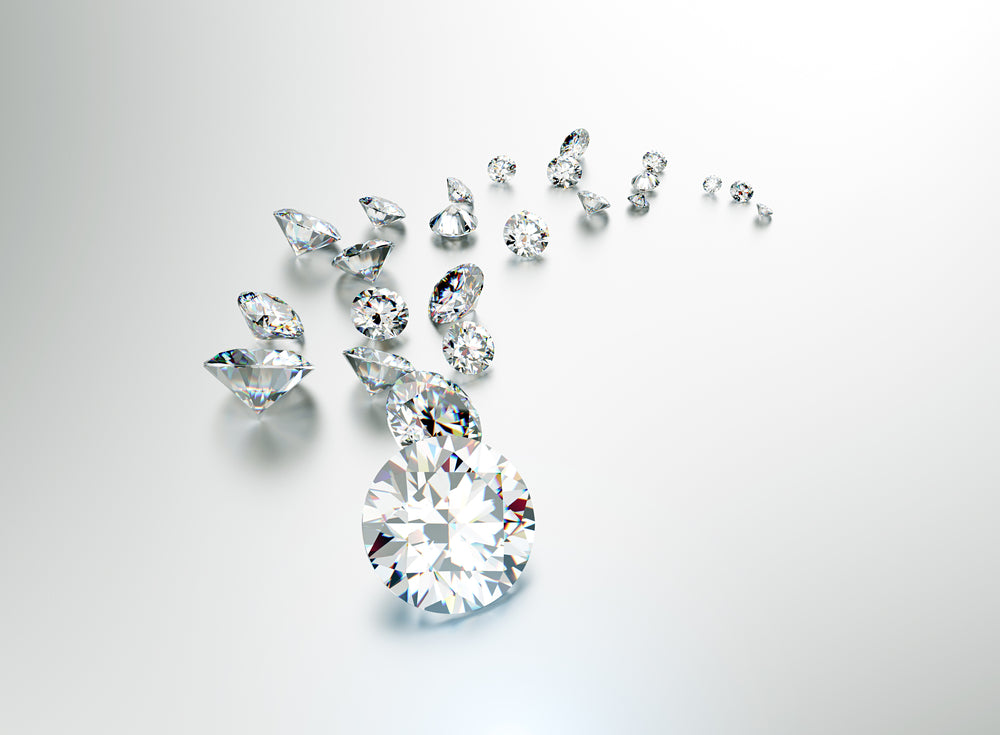
The 4C's - The Importance of Comparing Diamonds Before Purchase
By now you have probably heard about the 4Cs, Carat, Colour, Clarity & Cut, and the latest 'C' to be added, Certificate. So what are they and why are they so important when buying diamonds?
Carat is a measure of weight, diamonds are weighed in carats. 1.00ct of diamond is equal to 0.2 gram. The carat weight of a diamond is the easiest of the 4Cs to establish, as it only requires a calibrated set of scales to determine, whereas all the other 4Cs are graded on an individual graders perspective and opinion. The carat weight of the diamond is one of the most important aspects to consider when looking to purchase a diamond, it is one of the defining aspects on price and value. It is easy to correlate the carat weight of a diamond directly to its size, whilst it is true the higher the carat weight the larger the stone. It is important to remember the carat weight does not tell the entire story, for example a diamond weighing 1.00ct is twice the carat weight of a diamond weighing 0.50ct, however, it is not twice the size. Certain carat weights fetch a premium, even though they are not noticeably larger by the naked eye, than a stone of a very similar carat weight. For example, a diamond weighing 0.98ct will be worth less than a diamond of a similar colour, cut and clarity which weighs 1.01ct as it goes over the coveted 1.00ct weight.
The carat weight of a diamond is closely linked to the cut of a diamond. As we now know that the carat weight is linked to the size of a diamond, when we start to look at the cut, we are looking at the dimensions of the stone as well as the shape and proportions. Cut is important, especially for when the stone is set, as a stone with good proportions will return more light to the viewers eye and therefore more sparkle. Also, when a stone has good proportions it makes good use of its carat weight. For example, when a diamond with poor proportions is set in to a ring, it can look much smaller than it is, as the top of the diamond (also known as the crown) can be too small, and the majority of the diamond is then hidden within the setting. When the cut of a diamond is being graded, there are other aspects to be considered, such as, the finish, the polish and the dimensions of the facets. However, whilst all are important aspects, these are the easiest to judge by the naked eye. When looking at a diamond, you want to see plenty of sparkle, showing white light as well as the colours of the rainbow. Diamonds with an excellent cut will fetch a premium, however, it is perhaps a smaller impact on the value of the stone than some of the other 4Cs.

When you are looking at the sparkle from a diamond, the clarity will also effect the way in which the light reflects around the stone and back to your eye. Nearly every diamond has naturally occurring imperfections, which grow in the diamond as the diamond grows. The imperfections are completely unique in each diamond and so they are like the natural hallmark for each diamond. Imperfections within the stone will get in the way of the light and therefore, effect how the stone looks. The number, size and location of the imperfections within each diamond will all effect the way in which the light reflects around the stone. The grading of a diamonds clarity ranges from Internally Flawless to Heavily Included, diamonds which are graded as Internally Flawless, as the name suggests, have no visible inclusions at all when under magnification. Heavily included diamonds feature a lot of large inclusions that effect the durability and beauty of the stone, including how the light travels around. When looking for a diamond ring to wear everyday, such as an engagement ring, durability is very important. The clarity of a diamond is very important when considering the value of the diamond. The inclusions in stones graded above Slightly Included are generally not visible with the naked eye, therefore, it is also possible to purchase a diamond with a good clarity (with small inclusions which are not noticeable with the naked eye) that is less expensive due to the existence of the inclusions. Clarity and colour are two of the most well known 4Cs, and colour is arguably more important than clarity, as a slight yellow colour can be very undesirable in a diamond.
Diamonds are graded on their colour, by how colourless they are. Of course, there are exceptions to this rule, as there are coloured diamonds. Coloured diamonds are graded on a completely different colour scale. (We will do another blog on this soon.) So for the purposes of this section, we are just concentrating on diamonds that are considered as white diamonds. Diamonds are graded on how colourless they are, and the closer they are to colourless the more desirable and valuable they are. They are graded from colourless to tinted in colour. The colour of a diamond is visible with the naked eye and is graded without the aid of magnification. Generally, colour is considered one of the most important aspects of the 4Cs as the diamond colour is easy to detect with the naked eye and very little understanding of diamond grading is needed to see the effect of the colour. When discussing the colour of diamonds, you will notice that letters of the alphabet are used, D is considered colourless, through to Z which is considered tinted in colour. Generally it is established that colour is not normally detectable by the human eye until the grade H, so it may be arguable that spending the premium for diamonds graded D,E,F,G in colour is unnecessary. From H down to Z the increase in depth and strength of colour within the diamond becomes much easier to detect. It may be worth looking at different diamonds and deciding for yourself what grade best suits your requirements.

All in all the 4Cs are an important and relatively easy way to compare diamonds, however, it is necessary to do your own homework on the grades you feel best suit your requirements, so you have a clear idea of what you are looking for and don't feel overwhelmed by the number of different grades attributed to a single stone.
This leads us to the most recent addition to the 4Cs, becoming more widely associated as the '5th C', certification. Certification of diamonds is becoming popular and widely used to help keep the details of each stone clear and detailed on a report from a diamond lab. For a diamond to come with a certificate, it must have been sent to a diamond grading laboratory, there are diamond labs all around the world, however, the most notable are GIA (Gemological Institute of America) and the IGI (International Gemological Institute). The diamonds are then graded and the report is generated, and the report is to stay with the diamond, so when the diamond is sold the certificate goes with the diamond. It stays with the diamond as proof of the colour, cut, clarity, carat weight and some reports will go in to further details such as the country of origin if known. There is a continuous argument within the industry around the accuracy of the diamond reports and how certain laboratories are known to be too generous or too lenient on the grading of stones, meaning that there is some level of skepticism. This generally creeps in due to the grading of the colour and clarity being based on an individual graders interpretation of the different grades. However, generally, the certificate is a good way to ensure confidence in your purchase.
The certification process will increase the ticket price of diamonds, not because it means the diamond is of a better quality, but purely due to the fact it comes with the report with the details of the quality of the stone. Therefore, you could see two diamonds, of the same colour, clarity, carat weight and cut, however, if one has a certificate and one does not, the one with the certificate will be more than the one without. Another thing to consider is, the laboratory which certificates the diamond will effect the value, so if the diamond comes with a GIA certificate, it will be deemed to be worth more than a diamond with a certificate from IGI. In our opinion, certification is a useful tool, however, it isn't always necessary to purchase a diamond with a certificate.
We currently do not hold a large stock of certificated diamonds, however, if this was something that you would like to look in to, we will be more than happy to put together a selection for you to take a look through.
So, the 4/5Cs of diamonds are important when buying a diamond, however, not necessarily equally so. The most important aspect of buying a diamond, is knowing what you are looking for, and finding a jeweler, like us, who is friendly, professional, approachable, trustworthy and who will help you find the right diamond for you. Pop in an have a chat with us, our diamond specialist is always happy to discuss your requirements and offer advice.


